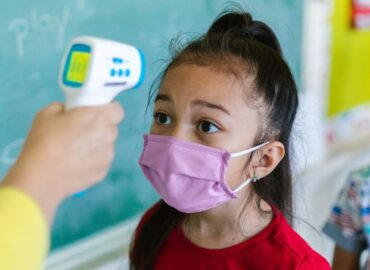As shut-down restrictions are being lifted and unoccupied buildings are being opened up, there are many questions about the spread of COVID-19 through HVAC systems and what should be done to reduce spread. As a follow up to last month's post, SEDAC reviewed the latest research on this topic to answer some common questions.
Can COVID-19 be spread throughout a building by the HVAC system?
It's possible, but unlikely in well-designed and properly maintained HVAC systems. Poorly ventilated buildings do affect air quality and can contribute to the spread of diseases. Microorganisms, such as those causing tuberculosis and legionnaires disease, can be transmitted by air-conditioning systems, particularly when they are poorly maintained or when the number of fresh air exchanges per hour in a room is insufficient. As for COVID-19, theoretically it can be drawn into the HVAC system and distributed, but that does not appear to be a primary mode of transmission. Sources note that while it typically does not get drawn into the system and distributed to to other spaces, it can spread through intra-space airflows (air turbulence and flow suspension).
The good news: research suggests that transmission of droplets containing viral material through ventilation systems is unlikely in a well-designed and properly maintained HVAC system. It is far more likely that you will get COVID-19 from contact with infected individuals or contact with infected surfaces. Social distancing, good hygiene practices, wearing masks, and surface disinfection remain the best practices for staying healthy.
Do filters help? If so, what kinds?
Filters help only to a certain extent. According to ASHRAE, ventilation and filtration provided by HVAC systems can reduce the airborne concentration of SARS-CoV-2 and thus the risk of transmission through the air. Although installing better filters can improve indoor air quality, common HVAC equipment is not designed to filter particles as small as aerosolized virus particles, nor is the equipment designed to completely stop all small particulate matter from passing through gaps between filters or around the trays that hold filters in place.
The World Health Organization and other public health bodies, citing the science to date, say the pathogen is spread almost entirely by larger droplets ( > 10 microns). These heavier particles are emitted mostly when infected people cough or sneeze and create gas clouds that extend up to 27 feet. Residential and commercial systems typically require a Minimum Efficiency Reporting Value (MERV) of 8, which is rated to capture 70 to 85% of particles ranging from 3.0 to 10.0 microns. However, most viruses that are not embedded in a larger droplet, including CoVs, range from 0.004 to 1.0 microns, limiting the effectiveness of these filtration techniques against pathogens such as SARS-CoV-2, according to a review published by American Society for Microbiology and mSystems. Conventional air filters with an improved MERV of between 13 and 15 can reduce levels of droplet nuclei but are not likely to be effective at stopping any unattached virus particles. These filters could assist in reducing the likelihood of droplet nuclei from spreading and may be within the fan capabilities of existing systems.
HEPA (High Efficiency Particulate Arresters) filtration systems filter 99.999% of dust particles and airborne contaminants such as viruses and bacteria. These filters are typically used in hospital operating rooms, acute care areas and clean rooms. HEPA filters are unlikely to be a practical option for most existing HVAC systems due to their high pressure drop. Additionally, HEPA filters require specific housings and cannot be retrofitted as a direct replacement for traditional filter media. As a general rule, efficient filters have higher pressure drops which can increase energy consumption. Most HVAC systems cannot be upgraded from MERV to HEPA-style filters without a fan and motor upgrade.
SEDAC recommends replacing filters when loaded and checking pressure drop across filter vs. design pressure drop. Use proper personal protective equipment when changing air filters, and bag and dispose of them properly.
Should I increase or decrease air flow to help prevent spread of the virus?
Because the virus can spread through intra-space airflows (air turbulence and flow suspension), sources recommend minimizing total air flow while still providing adequate conditioning of air (heating, cooling, dehumidification, ventilation). Turbulent airflow should be avoided as it can re-suspend particles or keep them suspended for longer periods of time, increasing exposure risk. Don't increase airflow to try to flush out the virus from the air.
What about increasing ventilation? Will that help?
Many studies suggest that increasing the amount of outside air can help dilute any potential airborne droplets containing COVID-19 within a space. In systems with modulating outside air systems, or where adjustment is possible, increasing outside air rates should be considered. This will also require increasing the system's exhaust air rate and will help dilute any contaminants in the circulating air. Check economizer controls and verify proper operation. Building operators are urged to revert to normal building operations after the period of risk has passed.





